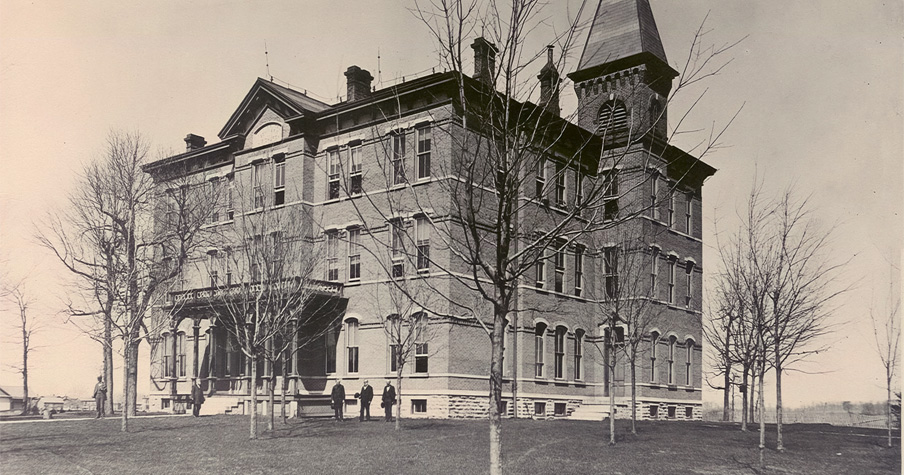
The storied Bonebrake Theological Seminary, precursor to United Theological Seminary, was repurposed as a nuclear weapons research facility during World War II. Courtesy of United Theological Seminary
Last summer’s cinematic blockbuster Oppenheimer chronicled the Manhattan Project’s secret laboratory in Los Alamos, N.M. The film neglected, however, to mention an even more secret branch of the project housed in an old building in Dayton, Ohio – the former Bonebrake Theological Seminary.
Katherine R. Sopka and Elisabeth M. Sopka tell the story in “The Bonebrake Theological Seminary: Top-Secret Manhattan Project Site,” a 2010 article in the journal, Physics in Perspective. Their primary source was John J. Sopka – Katherine’s husband and Elisabeth’s father – who worked as a research physicist at Bonebrake from 1944 to 1945.
John Sopka graduated from Harvard in 1942 with a bachelor’s degree in physics and recruited by the U.S. Army Corps of Engineers for a wartime research project. During an interview, he was told to report to Dayton in two days; he was given train tickets and an address.
When he got off the train in Dayton, he hailed a cab and told the driver to take him to First Street and Euclid Avenue. Perplexed, the driver said there was nothing there, but he took Sopka anyway. “There they saw an essentially empty corner lot with a few trees and some undergrowth,” the Sopkas wrote. “However, set back toward the rear of the lot they saw an austere, three-story, brownstone building surrounded by a high cyclone fence with a small gate and a guard post beside it,” with the words Bonebrake Theological Seminary engraved above the entrance.
The building had not been home to Bonebrake in two decades; the seminary had relocated in 1923. Nevertheless, it was the first building constructed for Union Biblical Seminary of the Church of the United Brethren in Christ, founded by Milton Wright – father of Orville and Wilbur Wright – and renamed in 1909 after John and Mary Bonebrake bestowed farmland to honor six relatives who had been United Brethren pastors. In 1954, after a merger with Evangelical School of Theology, it was renamed again: United Theological Seminary, as it is today.
According to the Sopkas’ article, Charles Allen Thomas, director of research at the Monsanto Chemical Company in Dayton, had been recruited to “oversee all of the chemical processing required for the plutonium bomb.” Thomas wanted to stay close to home, so “in September 1943, the U.S. Army Corps of Engineers leased from Dayton’s Department of Education a temporarily vacant building located on the edge of the downtown business district” – the Bonebrake building.
Constructed in 1879, the building housed a chapel, library, office, four recitation rooms and 16 dorms rooms. “[The building’s] interior was immediately renovated to accommodate administrative offices, chemistry, physics, and electronics laboratories, a special counting room for measurements of radioactivity, a machine shop, and glass-blowing facilities,” the Sopkas wrote. The outside, however, remained unchanged: “Nothing revealed that inside this building intense research was underway with the goal of producing the polonium that would be used...to ignite the plutonium implosion bomb that would be dropped on Nagasaki.”
Those working inside were similarly unaware of the goal, the Sopkas wrote. The first explicit references to “atomic bomb”... occurred on VJ Day, Aug. 15, 1945.
The lab was moved to a larger site that year, and the Bonebrake building was decontaminated and returned to the city’s education department. The work remained top secret, and John Sopka took that seriously; he only told his wife and daughter of his experiences nearly six decades later in 2003.